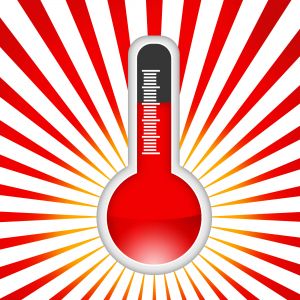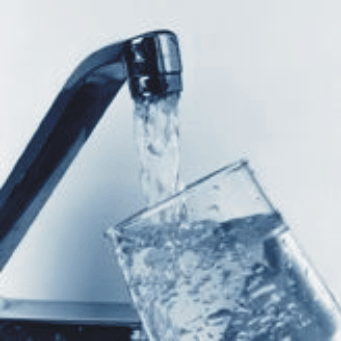ENDURE: August 2012
Enduring the Summer Heat......
 Another summer has come and another summer will soon be gone...August is often referred to as the “Dog Days” of summer with the sun and heat, and although bothersome now, will soon be something we wish for once we enter the depths of January. But before it’s gone, we’d like to offer up one last tribute to summer and take an opportunity to answer some questions that have come up regarding the heat and the sun. Our Prevention Team of Mike Eisenhart, Dr. Justin Bagley, and Nick Pfaff answer some of your tough questions on this topic so that you’ll be best suited to endure the sun and heat throughout the final “dog days” of summer.
Another summer has come and another summer will soon be gone...August is often referred to as the “Dog Days” of summer with the sun and heat, and although bothersome now, will soon be something we wish for once we enter the depths of January. But before it’s gone, we’d like to offer up one last tribute to summer and take an opportunity to answer some questions that have come up regarding the heat and the sun. Our Prevention Team of Mike Eisenhart, Dr. Justin Bagley, and Nick Pfaff answer some of your tough questions on this topic so that you’ll be best suited to endure the sun and heat throughout the final “dog days” of summer.Mike, Is there a temperature at which it becomes unsafe to exercise or work outdoors in the heat?
It's pretty much impossible to give a specific temperature that applies to every situation because, like most things, the body is amazing at acclimating to its surroundings and since every single person is exposed to a different combination of variables, every single person can have a slightly different reaction to the heat.
When attempting to understand a person's heat tolerance, or ability to work safely in the heat, we have to consider things such as:
- their cardiovascular health and fitness,
- their body composition,
- their level of environmental exposure (have they successfully acclimatized? have they been over exposed?),
- the exertion level at which they will be working (i.e. "working" on their blackberry in the heat is presumably much less physically tasking than "working" in a more manually laboring job task),
- their "rest-reserves" (in athletes we often consider their "accumulated fatigue")
- their nutrition and hydration status
- their age - the very old and very young tend to not be as efficient at "thermoregulation"
If, for example we're talking about a relatively young person who has excellent cardiovascular fitness, is at a normal body weight and fat composition, has had 14 days of moderated exposure to the heat and humidity and they are otherwise rested and well "fueled" they may be able to work safely in a more harsh environment than someone who is generally out of shape, eats and sleeps poorly and spends the vast majority of their day in a temperature controlled environment.
HOWEVER, if we are looking to make a more general statement, i.e. looking at "the average" person (whatever that means) - it's generally accepted that as temperatures get above 80 degrees F performance begins to suffer and as the temperature creeps above 90 degrees F risk elevates quickly. Humidity of course only makes the workload on the system (and therefore the risk) even higher......so 85 and very humid could be worse than 95 with very low humidity (as Nick explains with heat-index). We usually advise people working in the heat to be very cautious when temperatures are above 90. For athletes who may be exercising in the heat, it is very very important to monitor all the data points you have available (heart rate being particularly important), but most importantly.....LISTEN to what your body is telling you.
Nick, What is the "heat index" and the "real feel" all about and why does it matter?
We’ve become so focused on the temperature of each day, that we often neglect an important part of the overall heat picture - humidity. Anyone who’s endured a Northeast summer can attest to the debilitating heaviness of the summer heat, when the air’s so thick you could swim through it, and temperature alone is not the only factor to consider when you are planning for a safe experience in the heat. We’ve all said to ourselves, “Geez, it’s only 80 degrees today? It FEELS much hotter than that!” Heat Index is the measure devised to take into account the effects of both temperature as well as humidity, and as Mike mentioned above, a very humid day can “feel” hotter than a less humid day even though the temperature is much cooler.
The concept is that the body’s main cooling apparatus, sweat, works by evaporating from the skin providing a cooling effect for the body as heat radiates out into the air. Even though you may sweat much more when it’s humid, the cooling effect isn’t as great because the moisture is not evaporating as quickly (if at all) and you’re not getting nearly as much cooling for the body. When the heat index approaches your body temperature of 98.6 degrees fahrenheit, there is no longer a way for heat in your body to escape into the air, placing you at increased risk for heat stress related symptoms such as cramping, extreme sweating, rapid pulse, dizziness, nausea, confusion, etc. Most publications indicate that this effect actually begins to happen at a heat index of around 90 (lower than body temperature) because your body creates a thin “blanket” of heat which encases the skin. The same effect is only compounded when you add clothing to the mix trapping even more body heat against the skin depending on the material of the clothing and the amount of skin coverage.
If you’re planning an outdoor workout, labor intensive project or job, or even just hanging out at the beach, be sure to check not only the temperature, but the humidity as well, and then determine the heat index before you start and take appropriate measures to keep yourself cool. Shade, air conditioning, proper hydration, and applying ice to your hands or back of your neck are all good strategies to help cool the system.
The National Weather Service has published a very useful color chart (found here) which can be used to determine heat index and associated risk. If you have any questions about heat index, or more body cooling strategies, please contact us at prevention@pro-activity.com.
Justin, How much water should I drink during exercise or work on a hot day?

Traditionally, we have been told to drink in a manor consistent with what is called the "0% dehydration principle". What this principle implies is that individuals should drink enough so that the amount of fluid being lost through all the various processes the body undertakes (sweating, respiration, metabolism, etc.) to maintain homeostasis (balance) is matched by an equal amount of fluid going in.
On the surface this appears to be a fairly logical argument. However, once we dig a little deeper and begin exploring the various physiological processes (sweat rate, sodium concentration of sweat, rate at which fluids are absorbed through the intestinal lining, just to list a few) involved in maintaining fluid balance and at the same time consider all of the individual variation (heat acclimation, environmental temperature, body weight, etc,) that exists from person to person we quickly realize the "0% dehydration principle" may be flawed.
The key, most research shows, is that drinking “ad libitum” or in other words “at your leisure” which equates to drinking when you’re thirty is likely your best bet. Research further demonstrates, in doing so, individuals generally take in 500 ml or 16-17 ounces per hour while doing moderate exercise or working outdoor in the heat. This will allow you to stay properly hydrated without becoming over hydrated and developing symptoms such as upset stomach, performance decline, and in rare cases a severe loss of blood sodium known as hyponatremia.
In the past, we’ve often heard that if you’re thirsty, you’re already dehydrated which seems to be in conflict with the above statement. Although it’s true that thirst can be a sign of dehydration, using it as a measuring stick of when to drink has shown to keep you adequately hydrated. Some believe the statement “if you’re thirsty it’s too late,” is something that’s been perpetuated by the sports drink industry to help sell more product, and unfortunately the conflicting information can become very confusing, but in general, as is gaining momentum in the research, the human body is a finely tuned machine and if you listen to the cues it gives, drinking when you feel thirsty (but not parched), you should be able to stay ahead of the curve. This guideline is geared to those doing general exercise or who are exercising at a high intensity for less than 4 hours. In the more extreme cases of endurance training and competition there are many considerations outside of the scope of this discussion, however if you are a Pro-Activity coached athlete this is a KEY to your success, so take the time for the discussion!
Nick, Is there a difference between a 90 degree sunny day and a 90 degree cloudy day? What is the best way to deal with sun?
Generally speaking, the term “90 degrees” refers to the air temperature during a given time, and most official measures of air temperature are measured in the shade for consistency purposes. However, the temperature experienced by an object while in direct sunlight, can be drastically increased due to the thermal effect of the sun’s rays and the object (you in this case) absorbing energy from the sun into your skin and clothing. The body often experiences temperatures upward of 10 to 20 degrees fahrenheit hotter in the sun than the air temperature reading, so the answer is “YES,” the risk of dehydration and heat stress are much higher on a sunny day than on a cloudy day, especially if you’re spending a lot of time in direct sunlight.
In addition to heat stress risks due to sun exposure, other serious risks include skin and eye damage due to the sun’s radiation. Formation of cancer is the major risk to the skin and aside from avoiding the harmful rays, early detection becomes critical in the success of treating the condition if over-exposed.
The best way to deal with the sun, as mentioned above (after the 15 minute "Vitamin D shot"), is to simply avoid it when possible. Small doses of sun for short periods of time can have a very positive effect on an individual’s overall health, but when the UV index is greater than 3, seeking shade is your best option. Sunscreen, clothing, hats (covering both face and back of neck), and polarized sunglasses are other measures that can be used to minimize the harmful effects of overexposure to the sun’s rays, but keep in mind that each of these has its limitations as well. For example, really strong sun can even cause a burn through a t-shirt as the sun’s rays are able to penetrate between the cloth fibers reaching the skin.
Keep cool!
-Prevention Services Team at Pro-Activity Associates
Labels: ENDURE

0 Comments:
Post a Comment
Subscribe to Post Comments [Atom]
<< Home